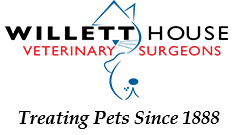Endoscopy
Endoscopy allows us to directly visualise internal structures of the body which are otherwise inaccessible or only accessible using surgical techniques. We have a range of endoscopes at the practice which allows us to offer the following procedures:
Gastrointestinal Endoscopy
Gastrointestinal endoscopy allows us to visualise the majority of the intestinal tract including all, or part of, the oesophagus, stomach, small intestine, large intestine and rectum. It enables us to investigate disease processes that cause symptoms such as regurgitation, vomiting, diarrhoea and straining to pass faeces; and allows us to take biopsies of the gastrointestinal tract and/or remove certain foreign bodies without the need for surgical intervention.
Bronchoscopy
Bronchoscopy allows us direct visualisation of the trachea and upper airways of the lungs under magnification; and is useful in investigating pets with coughing or other respiratory signs. In addition, to visualising the airways we can also use bronchoscopy to performing a useful technique called bronchoalveolar lavage (BAL) – where we can take a wash of the lower airways of the lungs to assess for diseases such asthma.
Rhinoscopy
Rhinoscopy is the technique of placing a rigid endoscope into the nasal chambers. It allows the nasal cavities to be directly visualised under magnification and biopsies to be taken of any abnormal structures. Previously this would have required traumatic surgical procedures to allow visualisation of these structures.
Rhinoscopy is particularly useful in the diagnosis of tumours, fungal infections and diagnosis of chronic rhinitis (longstanding inflammation of the nasal chamber) and can be used to take nasal biopsies and remove foreign bodies from the nasal chambers.
Arthroscopy
Arthroscopy is the technique of placing a rigid endoscope directly into a joint. It allows visualisation of the joint under magnification resulting in greater diagnostic capabilities than conventional treatment would allow. Some diseases can be treated with the endoscopes in place, preventing the need for your pet to undergo a large invasive surgical procedure. The benefit of this is that the patient recovers much more rapidly having had less trauma and consequently significantly less pain. Arthroscopy can be used to investigate abnormalities in most joints but, in particular, is used for investigating problems predominantly in the shoulder, elbow and knee joints, such as cruciate disease, elbow and shoulder dysplasia and meniscal injuries.
Cystoscopy
Cystoscopy is the technique of placing a rigid endoscope into the bladder. It can be used to assess urinary problems in the female cat and dog. The main advantage is that it allows direct visualisation of the structures under magnification to allow diagnosis either visually of structural problems or by allowing direct biopsies to be taken of diseased sites. This has the benefit of allowing a diagnosis to be achieved without the need of a traumatic surgical procedure. Consequently, the patient has significantly less trauma, pain and the recovery period is much quicker. It is a useful technique when investigating signs of cystitis.
Pharyngoscopy and Laryngoscopy
Pharyngoscopy and laryngoscopy allow us to visualise the pharynx (back of the throat) and larynx (opening of the trachea/windpipe), respectively. These techniques provides direct visualisation of these structures under magnification allowing structural abnormalities to be diagnosed and any diseased areas to be biopsied. Pharyngoscopy is useful in the diagnosis of tumours, inflammation, foreign bodies and polyps, while laryngoscopy is the standard used for diagnosing paralysis of the larynx.
Laparoscopy or Key Hole Surgery
We offer a range of key hole techniques including the keyhole bitch spay please click on the following links for further information:
- Key Hole Bitch Spay
- Keyhole Surgery and Techniques
